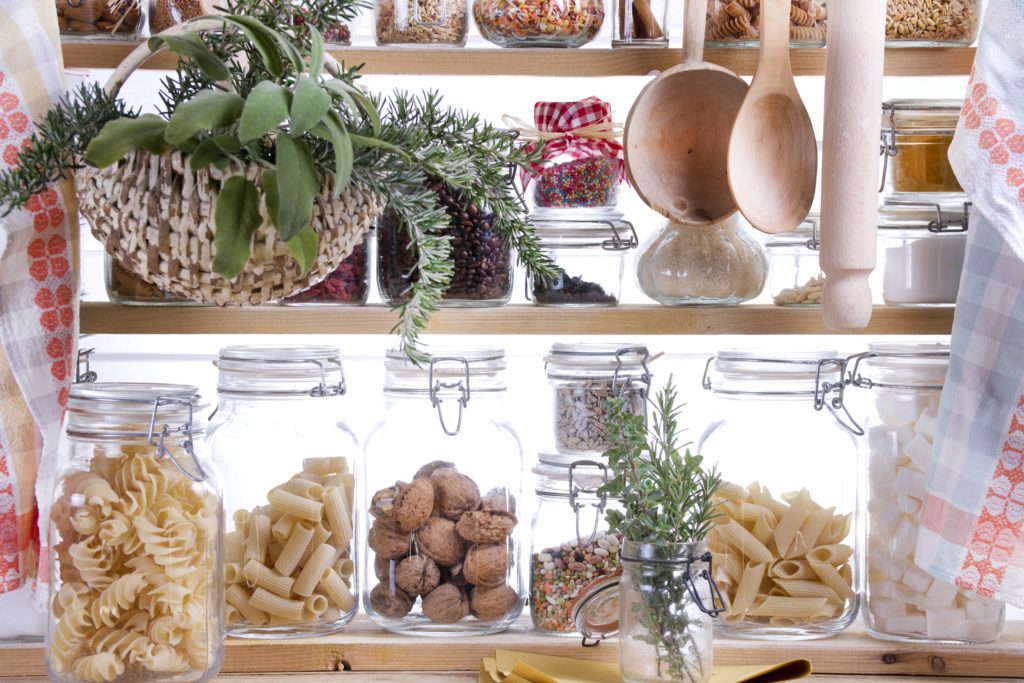
Pondering Plastic
Sustainability and reducing our carbon footprint have been two topics that have been in the forefront of emerging research to protect our natural environment. Your carbon footprint is defined as the total amount of greenhouse gas emissions caused by activities such as burning fossil fuels for electricity, heat and transportation. I’m sure you are aware that we are not the only ones creating greenhouse gases. According to the EPA 21% of greenhouse gas emissions involve industries which create certain chemical reactions necessary to produce goods from raw materials. Plastics production is responsible for 1% and 3% of U.S. greenhouse gas (GHG) emissions and primary energy use, respectively (1). Take a moment right now, think about what’s in your fridge. How much of what’s in there is packaged in plastic?
As I mentioned in my Instagram post this afternoon, the CDC reports that more than one- third of all Americans are obese. In fact, a recent study reports that there has also been a significant rise in severe obesity in children among ages 2 to 5. In just about every one of my nutrition classes this semester, we have examined the increased prevalence of obesity as it relates to children and adults. These statistics are startling and registered dietitians are constantly examining prevention and treatment strategies to decrease obesity’s prevalence in our communities and schools.
This brings us to zero waste and its importance.
So I’m going to be speaking about zero waste from a nutrition standpoint. Let’s think back to all of the products in your refrigerator. Just by a quick glance, I can tell you about 50% of what’s in my fridge is wrapped in plastic and I’m probably underestimating. My hummus, grated parmesan, mediterranean style dressing, baby carrots, celery, mixed greens, spinach, butter, salsa… I could go on… is packaged in plastic. And the rest of the items are in paper boxes, such as pasta, cereal, granola, etc. Now I’m a single woman, so whoever I don’t use I wrap up in plastic or place in a plastic container. Can anyone relate to this?

When we look at zero waste from a nutrition standpoint we are looking at sustainable management of food in two ways.
First, we are looking at reducing food waste. I can’t say for sure, but I may be in the majority of people who only purchases what the need for a few days and then go grocery shopping again when those items run out. However, I can also say that many times, my refrigerator is full of food and I still go shopping for more groceries. Now, I’ve purchased new fresh produce and packaged foods, only to let what’s already in my fridge go bad. I can honestly, abashedly say, that I waste a lot of food. I do!
Now this is where the zero waste practice is really helpful. Zero waste grocery shopping takes quite a bit of planning, but once you build the habits surrounding this behavior, it should become second nature. When you go grocery shopping in efforts to reduce waste, you are purchasing fresh produce and placing said produce in bags that you bring yourself. And as Lauren Singer (@trashfortossers) puts it, “You can let your vegetables touch!” Why do we feel the need to put each vegetable in its own bag. Crazy right?! You are also utilizing the bulk section of your grocery store, by bringing your own mason jars to fill. If you’re only bringing a certain number of jars, you can only fill so much. Impulse buying is less of a issue this way. You are buying only what you need and no more than that.
The second way zero waste grocery shopping is effective in sustainable food management is that you are purchasing less processed, packaged foods and giving less support to the food processing industry, which as we discussed earlier is creating copious amounts of greenhouse gas emissions. From a nutrition standpoint this is great because you are eating nutritiously dense whole foods— aka fruits and vegetables.
Overall, there is a larger impact of living a zero waste lifestyle. EPA estimates that we disposed of over 38 millions tons of food waste in 2014. It is important to support those in communities that don’t have enough to eat, while conserving resources for future generations.
According to the EPA, in 2013, “14.3 percent of U.S. households were food insecure at some time during the year. That is 48 million Americans, of which 16 million are children, living in food insecure households.”
So what can you do to begin your zero waste grocery shopping?!
- First gather up some mason jars and natural cotton fiber produce and shopping bags. Be sure to tare the jars before you fill them so the weight of the jar doesn’t affect the price of the bulk food you are purchasing.
- Look for local farmers markets in your areas where you can purchase fresh produce. Don’t forget to bring your own bags.
- Check out local groceries stores that allow you to bring in your own containers and purchase in bulk. Litterless has complied a really great list of stores in your area that support zero waste grocery shopping. Not every grocery store with a bulk section allows you to bring your own containers. Do you research first!
- Fill up your containers and write the the PLU (price look-up) number so the cashier knows how to ring up your purchase.
- Enjoy!
Remember, this is a journey that will not be completed over night. Give yourself some credit for making this decision and allow yourself time to make it a reality. Continue to research the topic and bring others into your zero waste community for support. Remember it takes time to build habitual behavior. Check out the post I wrote about creating habits in Form + Function (January).
I want to hear about all of your zero waste shopping experiences so email me or message me on IG to tell me all about it!
Always remember to live your best life!
References:
-
Daniel Posen et al 2017 Environ. Res. Lett. 12 034024
-
Skinner, A. C., Perrin, E. M., & Skelton, J. A. (2016). Prevalence of obesity and severe obesity in US children, 1999-2014. Obesity, 24(5), 1116-1123. doi:10.1002/oby.21497



